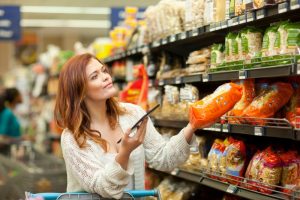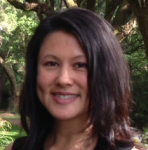 Every grocery store must be laser focused on those things that maintain a competitive edge in this saturated market. In Bedford, NH, with a population around 21,000, there are six grocery stores and two mass merchants who sell groceries. If Bedford is like the national average, these food retailers are counting on families spending 5.6 percent of their income on groceries. They all want a share of the wallet.
Every grocery store must be laser focused on those things that maintain a competitive edge in this saturated market. In Bedford, NH, with a population around 21,000, there are six grocery stores and two mass merchants who sell groceries. If Bedford is like the national average, these food retailers are counting on families spending 5.6 percent of their income on groceries. They all want a share of the wallet.
Within the last few years, two major chains closed their doors and three new chains came to town. To my surprise, I found myself shopping at all of them. I love buying produce at Whole Foods, but other than that, I split my spending at Fresh Market, Harvest Market, Market Basket, one of two Hannafords, Walmart and Target. As you can tell, I’m not a loyal follower of any of these retailers.
The reality is, unless the store is running some great promotions, I can go anywhere to stock up on groceries. As a working mom with active kids, my time is limited. I shop at the store that is most convenient at the time. That makes it difficult for retailers to engage with me. I suspect I’m not an anomaly.
So the question is: How can these stores earn a bigger share of my 5.6 percent?
Earn a larger share of my wallet with assortment optimization
Modern retailers are becoming more creative and mathematically driven to squeeze as much sales and margin from every inch of space possible. Along with the traditional marketing to attract attention and create interest in the brand, retailers also are betting on their analytical creativity. They’re going deeper than just analyzing merchandise productivity and store performance.
They want to know what I’m buying, how often I’m buying, and how much I’m spending. With recency, frequency and monetary information, they dive even deeper to analyze what’s in my basket to understand my needs, tastes and preferences. This is valuable information for both marketing and merchandising. With an understanding of my profile, marketing can send me relevant promotions and personalized offers. Merchandising can use that information to optimize product assortments and ultimately optimize revenue and margin.
For merchandising, the process of assortment optimization is no easy task. Along with the traditional product rationalization, it has to include advanced predictive analytics that consider market basket co-occurrence relationships and insight into trade area demand to determine who’s buying and what they’re buying. Assortment optimization also determines the best products to carry based on the store-specific demand.
The latter is the most difficult to execute as it requires granular data to optimize store-specific assortments. Consider the challenge of balancing all of the following criteria to curate an optimal assortment while the objective is to maximize revenue and margin:
- Customer decision tree to balance the breadth and depth – ensuring variety while avoiding duplication of products.
- Customer product loyalty and product incentives to ensure these products are prioritized.
- Product association to other products.
- Product inventory level balanced to avoid out of stocks and overstocks.
- Product dimensions to find the most productive product to occupy the available space.
- Product presentation method along with minimum and maximum facings.
- Available space capacity at each store.
These are just some of the things retailers must consider if they really want to do assortment optimization the right way.
If grocers want to be competitive, they need to understand what the consumers in Bedford are buying, why we’re buying these products and what else we may consider buying. What particular brand, flavor, size, ingredients, and price point combinations are driving purchase behavior and revenue?
Do the assortments provide the breadth and depth needed for the categories to grow and maximize margin? Or, are they too broad – to the point of diminishing returns? Does the productivity of assortment justify the space required to stock those products? These are important questions to analyze. All retailers should be able to mathematically predict the outcome of assortment decisions to minimize risk and maximize reward before making that investment.
Hannaford may not be able to control how often I come into their Kilton Road store but, if they use assortment optimization, they could be confident that their assortments reflect my needs, tastes and preferences. In turn, I’m confident that they would earn the majority of my 5.6 percent.
Learn more about SAS Assortment Optimization.
